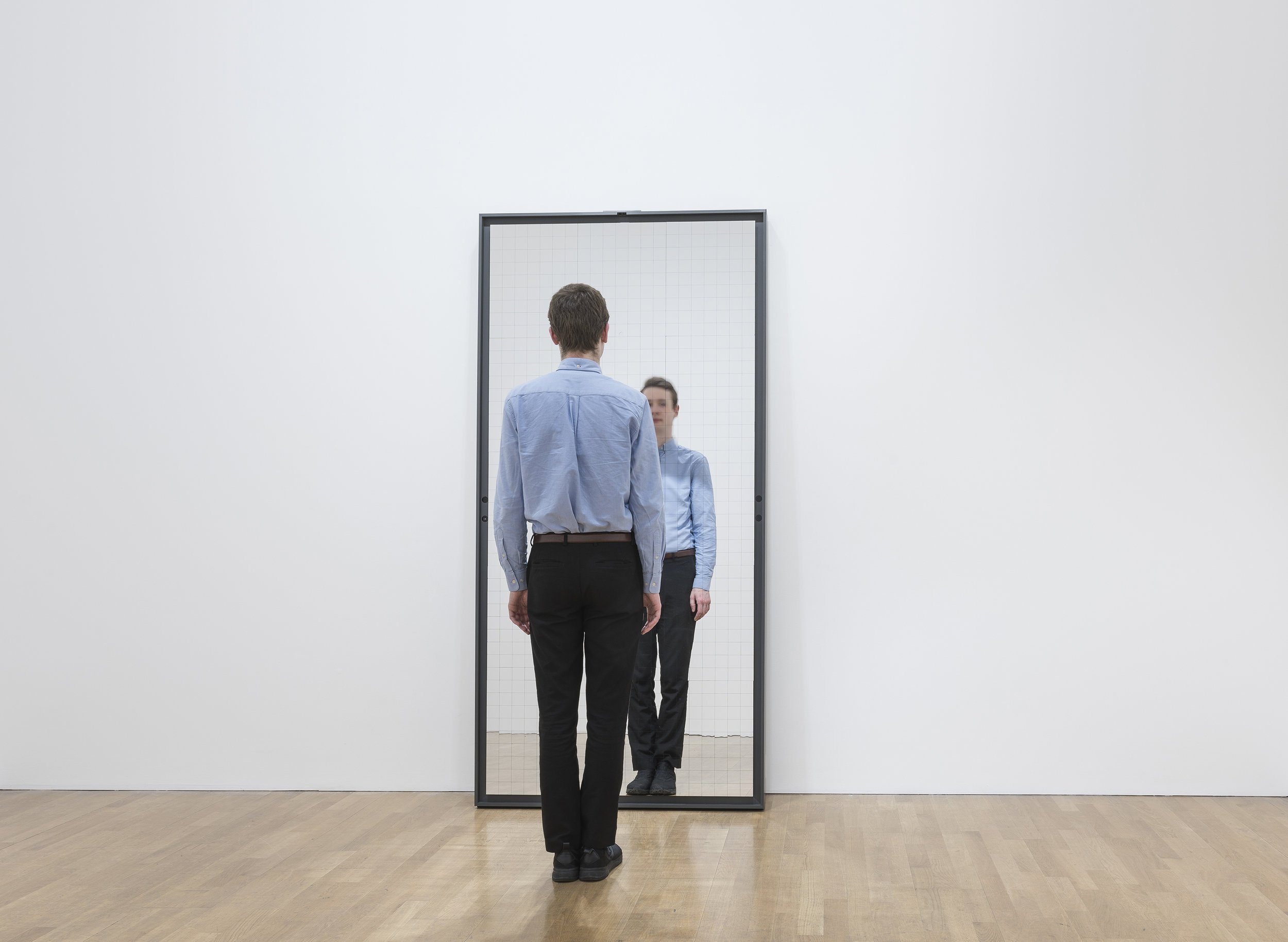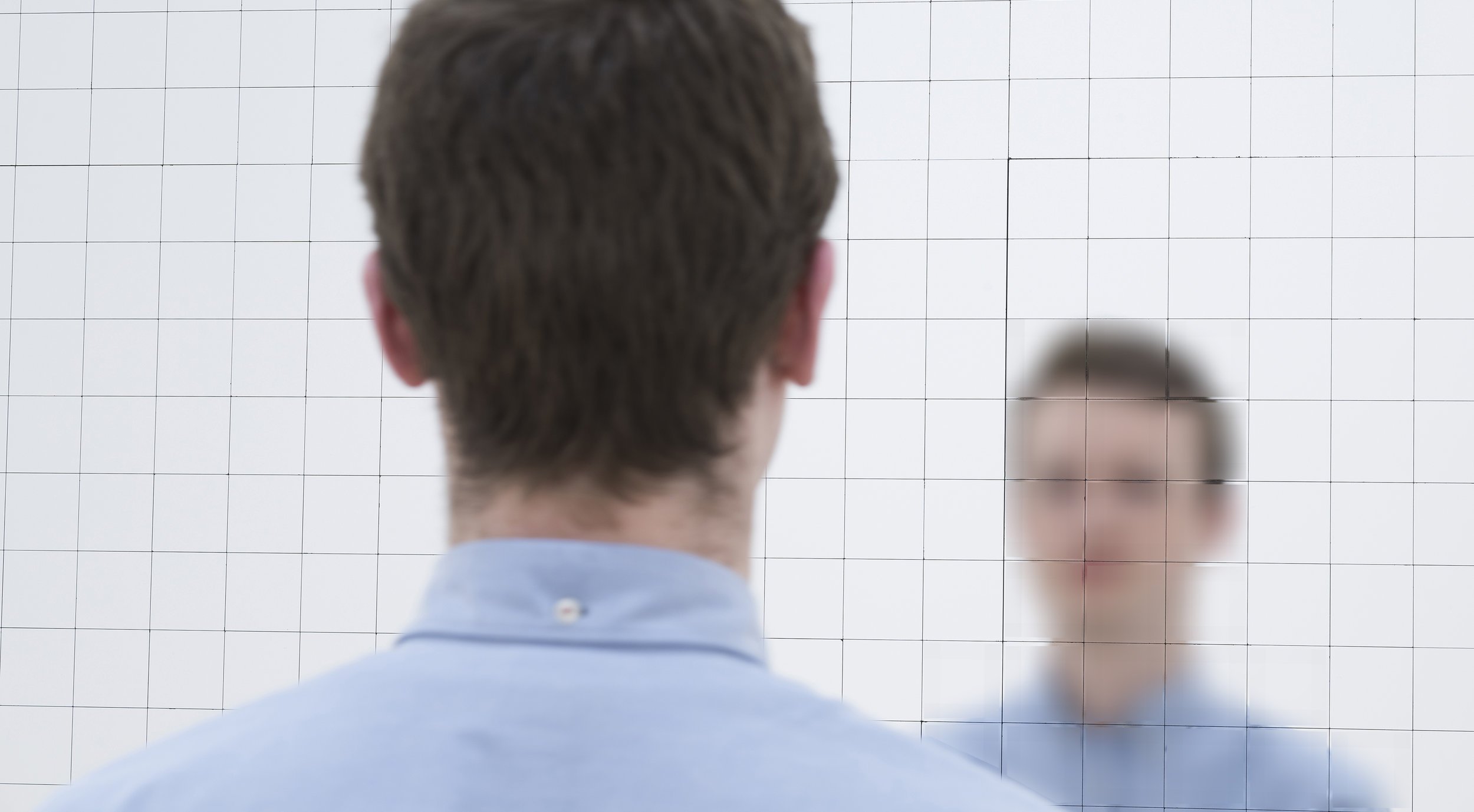

Blur Mirror
Mirror, Custom Mounts, Motors, Custom Motion Tracking Software, Camera, Computer
12 x 45 x 78 cm
2016
An experimental take on the traditional looking glass, Blur Mirror reflects everything within view but when a person steps into the frame, their own reflection is opaque and blurred — censored in real time. Obscuring the onlooker’s own face within their reflection, Blur Mirror presents a picture of human fragility and impermanence—striking a poignant chord in the age of the avatar, and global extremes of data transparency and suppression. Blurring is typically associated with digital effects; it is a tool with which to cloud recognisability and mask identity. Blur Mirror makes this process physical; the blurring is caused by the vibration of the individual mirror tiles that make up the looking glass, in response to the viewer’s bodily presence. The interaction offers a reminder that the seemingly intangible digital world is anchored in the earthly realm. Representing the viewer’s image kinetically rather than optically, the piece questions the notion of a ‘true’ reflection, creating a reflection as a series of vibrations, slowly and on a micro scale.
Photography: Damian Griffiths, courtesy Pace London
